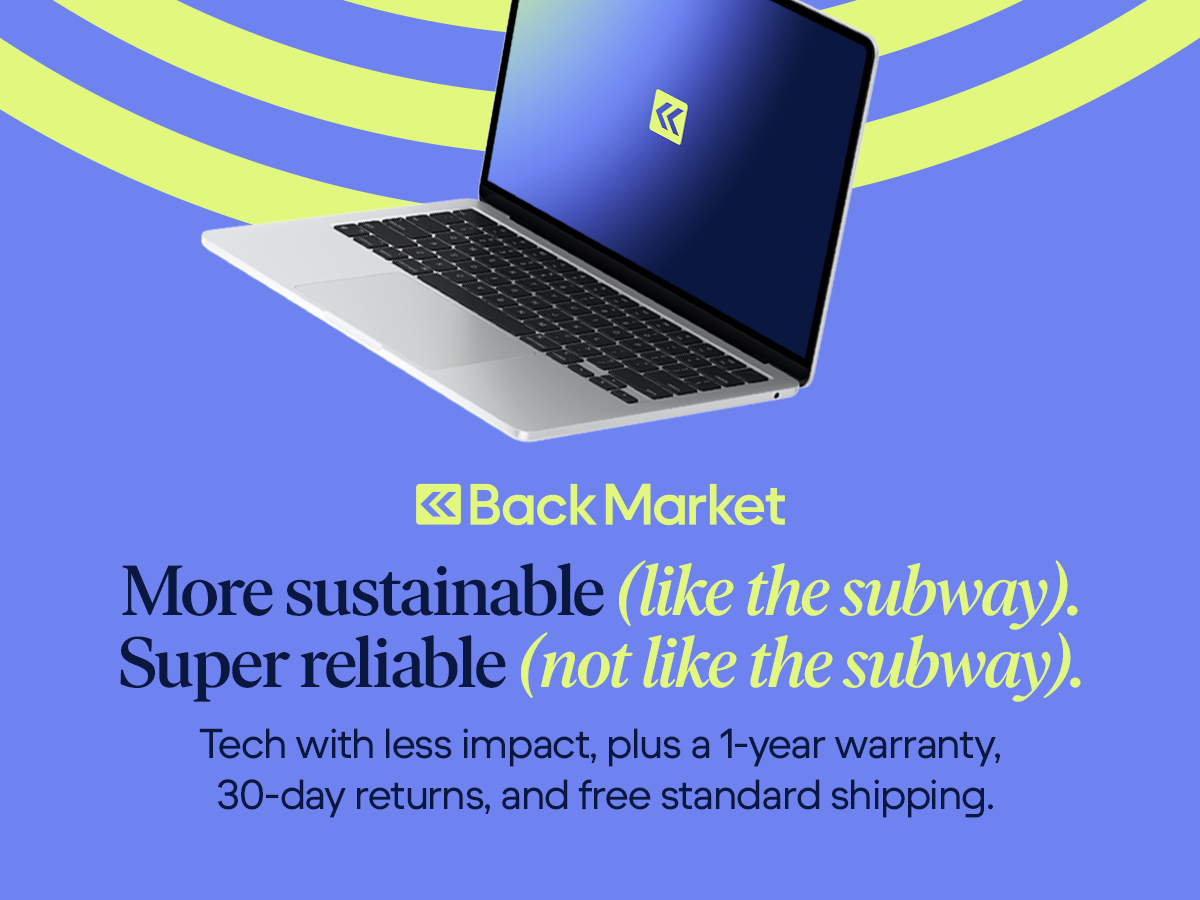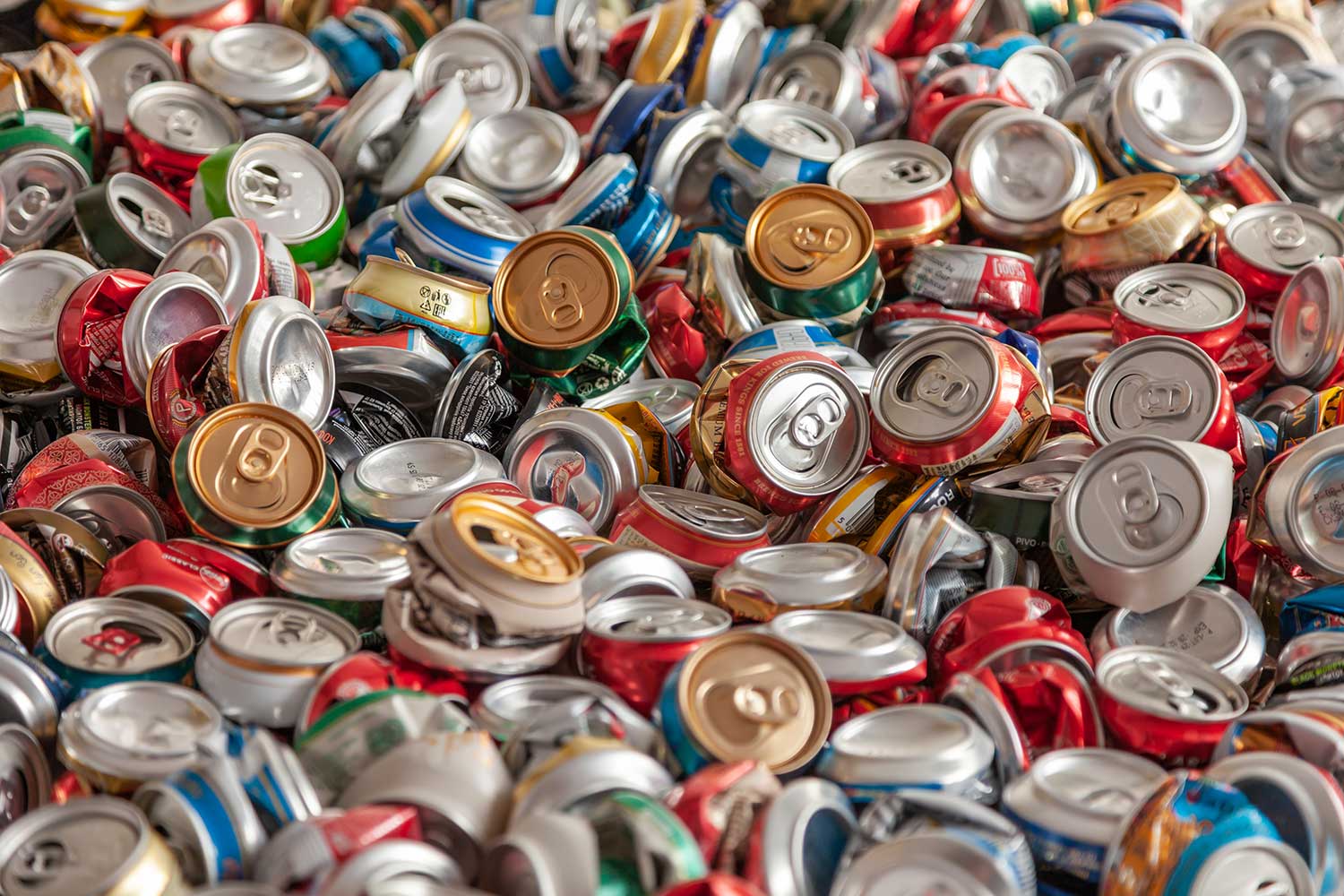Hey team, and welcome back to one5c! Our editorial team doesn’t really have a home base, but if we did it’d be New York. It’s an exciting time for this semi-Big-Apple-based crew—for a couple reasons. First, registration is now open for our very first event (ever). It’s a series of conversations and demonstrations that delve into all the opportunities holding on to and fixing our older tech can unlock, for business, the planet, and your wallet. It’s part of Climate Week in New York City, an annual event focused on fixing the climate crisis. Attendance is free, so if you’re in the area, we’d love to see you: RSVP’s right this way.
Second, it’s my immense pleasure to introduce a new member of the one5c team. Olivia Gieger will be with us for the next few months, contributing to the newsletter, one5c.com, and nerding out with me about public transit. I’m really looking forward to y’all hearing more from her—about her love of wilderness, about her goal to never own a car—but for starters she’s got this week’s dispatch for ya. Away we go! —Corinne
SPONSOR

WHAT WE’RE INTO THIS WEEK
By Olivia Gieger

Good read
The future is in your soda cans
Aluminum is far from sexy, but the lightweight, inexpensive metal is an essential ingredient for solar panels, electric batteries, and wind turbines. You know, all the good stuff for decarbonizing our energy grid. That means we need to simultaneously get even better at recycling it while also finding less-polluting ways to get more virgin material into the pipeline. In a pair of stories for Canary Media, Maria Gallucci explores what it means to revamp both processes. First, she looks at the world of “secondary” aluminum, and how we could incentivize even more cans and scraps to make their way to the recycling plant—a process that demands 95% less energy than “primary” aluminum. Working with fresh metal requires extremely high temperatures (thus lots of energy) to smelt the new stuff. Her second story visits a new project in Kentucky staring down the challenges of decarbonizing smelters and making them more efficient.
Greenwatch
Shein’s latest environmental faux pas? AI.
If Shein and artificial intelligence were on your 2024 hellscape bingo card, you can cross both off. The online-only fast fashion brand uses a machine-learning algorithm to tailor its production to predicted demand—turbo-charging the outfit’s already massive planet-warming potential. The company emitted more than 16.7 million metric tons of CO2 in 2023, the most of anyone in fashion retail. Shein says that using the advanced algorithm will allow the company to produce only the most sellable items, thus reducing waste, a spokesperson told Grist. However, most researchers agree that the best way to reduce waste is to encourage consumers to buy less stuff, rather than using AI to entice them to order even more.
Accountability check
Plastic manufacturers want to redefine ‘recyclable’
The Consumer Brands Association, which represents giants like Procter & Gamble and General Mills, recently wrote to the Federal Trade Commission (FTC) asking to redefine what they can label as “recyclable.” Their new definition would include flimsy and hazardous plastics that are only recyclable via methods that aren’t readily available to most Americans. Currently, the FTC allows companies to label plastics as “recyclable” when 60% of people have access to facilities that handle the material; despite this, only a fraction of the plastic gets a second life. Including barely recyclable materials under the “recyclable” umbrella doesn’t just make it more confusing for consumers, Jef Richards, a professor of advertising and public relations at Michigan State University, told ProPublica, but it has negative effects on the system we do have, often resulting in contaminated batches hitting landfills.
Report card
Methane emissions are exploding
New data from the research group the Global Carbon Project found that human-caused methane emissions jumped 20% over the past two decades. The prime culprits: landfills, livestock, and our increasing reliance on methane gas (aka natural gas) as an energy source. Building dams and reservoirs also contributes to this rising tally, the report detailed; methane-producing microbes munch away at nutrients in the still water, rather than getting washed out to sea as they naturally might. These numbers bring the planet startlingly close to the worst-case warming scenarios—and far off the 2021 agreement that 150 countries made to cut methane emissions 30% by 2030. “Warming that was once inconceivable is now perhaps likely,” Rob Jackson, the chair of the group that authored the report, told The Washington Post. Methane is 80% more potent than carbon dioxide at trapping heat, though its lifespan in the atmosphere is much more brief.
MIC-DROP CLIMATE STAT
54.6%
The portion of trashed food at grocery stores attributed to confusion over “sell by” and “best by” dates, neither of which have an official definition or are true indicators of safety. Here’s what you actually need to know about when food’s OK to eat.
STUDY GUIDE
Why it’s always better to fix a building than tear it down
By Tyler Santora

Old buildings, especially those in disrepair, tend to be drafty places. More air leaks lead to more heating and cooling—and ballooning utility bills and emissions. That’s a huge deal, because the construction and operation of infrastructure accounts for nearly 40% of global greenhouse gases.
The answer seems simple, in that case: Start fresh, build more efficiently. But retiring old buildings isn’t necessarily the best option. (As Carl Elefante, former president of the American Institute of Architects, once said, “The greenest building is…one that is already built.”) For at least a decade, research has shown that it’s almost always better for the climate to retrofit and renovate. This body of work, though, has largely centered on generalizations and hasn’t looked at actual structures in a city. New analysis published earlier this year in the journal Carbon Management, however, has found that remodeling is likely the best option for literally every building.
The carbon costs of building
A building’s carbon use goes beyond the emissions from its operation such as electricity, heating, and cooling, explains an author of the new study, Ming Hu, an architecture professor at the University of Notre Dame. Rather, it includes so-called embodied carbon that encapsulates the edifice’s full life cycle, from extracting materials and transporting them to the site, to building the structure and eventually demolishing it. For instance, concrete is responsible for a large chunk of infrastructure emissions because one of its main ingredients, clinker, is produced by heating limestone to super high temperatures. Because of this, concrete is responsible for 7% of global carbon emissions.
When weighing fixing the old against starting new, once you account for all of that—plus any new materials needed for rebuilding—it’s significantly greener to renovate. According to one calculation, revamping an older house rather than erecting a new one saves the carbon equivalent of 93 cars driving a full year; doing the same with a commercial building equals 1,028 cars. These numbers hold even when daily operations wouldn’t be as energy efficient as they otherwise could be in a shiny new build like a passive house.
Hu’s study in particular used machine learning to analyze the carbon trade-off of renovating versus rebuilding for more than a million buildings in Chicago. They found that constructing new, green buildings was the more carbon-efficient option in exactly zero scenarios. Which makes sense: A 2012 analysis from the Preservation Green Lab at the National Trust for Historic Preservation found that it can take up to 80 years for the energy savings of rebuilding with a greener design to make up for the carbon cost of construction.
Next, Hu will tackle other cities, many of which have newer buildings than Chicago does, to see how the carbon trade-off shakes out.
Alternatives to demolition
As anyone who’s watched too much HGTV knows, though, renovation can be dicey business. Old buildings often lack detailed notes about their structure, making retrofitting difficult, Hu says. This is particularly true if a developer is repurposing buildings for something completely different, like turning a warehouse into housing. It’s much easier to start from a blank slate. Fortunately, it’s usually cheaper to renovate, even if it is the harder option, Hu says.
There is also a middle ground: using old buildings for parts. When decommissioned buildings are blown up or torn down, much of their innards end up in landfills. But the “design for deconstruction” movement is pushing for the industry to design new buildings with recycling in mind. “If something from one life cycle can be put into another life cycle, then the entire economy, and entire society, will be better off,” Hu says. Recycling and reusing isn’t necessarily as planet-friendly as renovating, but it’s still better than getting stuck in a build-from-scratch, demo, build-from-scratch cycle.
